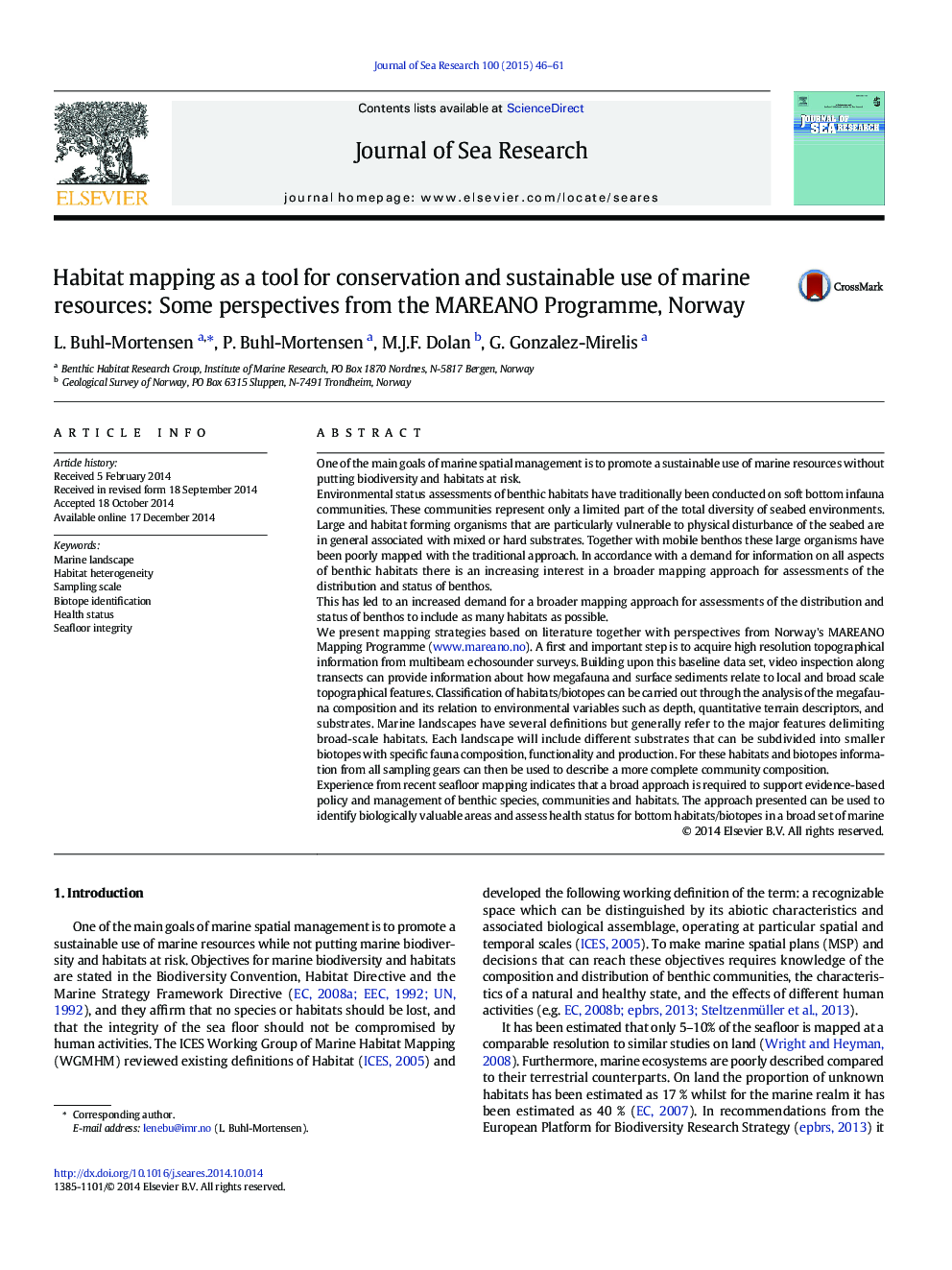| کد مقاله | کد نشریه | سال انتشار | مقاله انگلیسی | نسخه تمام متن |
|---|---|---|---|---|
| 4549609 | 1627474 | 2015 | 16 صفحه PDF | دانلود رایگان |

• A mapping approach that can support evidence-based policy and management of benthic species, communities and habitats.
• Identification of valuable bottom habitats/biotopes, assessment of human impact, and health status in marine landscapes.
• Habitat/biotope classes reflecting different environmental scales and settings in marine landscapes.
• Identification of research needs related to management of marine biodiversity
One of the main goals of marine spatial management is to promote a sustainable use of marine resources without putting biodiversity and habitats at risk.Environmental status assessments of benthic habitats have traditionally been conducted on soft bottom infauna communities. These communities represent only a limited part of the total diversity of seabed environments. Large and habitat forming organisms that are particularly vulnerable to physical disturbance of the seabed are in general associated with mixed or hard substrates. Together with mobile benthos these large organisms have been poorly mapped with the traditional approach. In accordance with a demand for information on all aspects of benthic habitats there is an increasing interest in a broader mapping approach for assessments of the distribution and status of benthos.This has led to an increased demand for a broader mapping approach for assessments of the distribution and status of benthos to include as many habitats as possible.We present mapping strategies based on literature together with perspectives from Norway's MAREANO Mapping Programme (www.mareano.no). A first and important step is to acquire high resolution topographical information from multibeam echosounder surveys. Building upon this baseline data set, video inspection along transects can provide information about how megafauna and surface sediments relate to local and broad scale topographical features. Classification of habitats/biotopes can be carried out through the analysis of the megafauna composition and its relation to environmental variables such as depth, quantitative terrain descriptors, and substrates. Marine landscapes have several definitions but generally refer to the major features delimiting broad-scale habitats. Each landscape will include different substrates that can be subdivided into smaller biotopes with specific fauna composition, functionality and production. For these habitats and biotopes information from all sampling gears can then be used to describe a more complete community composition.Experience from recent seafloor mapping indicates that a broad approach is required to support evidence-based policy and management of benthic species, communities and habitats. The approach presented can be used to identify biologically valuable areas and assess health status for bottom habitats/biotopes in a broad set of marine
Journal: Journal of Sea Research - Volume 100, June 2015, Pages 46–61